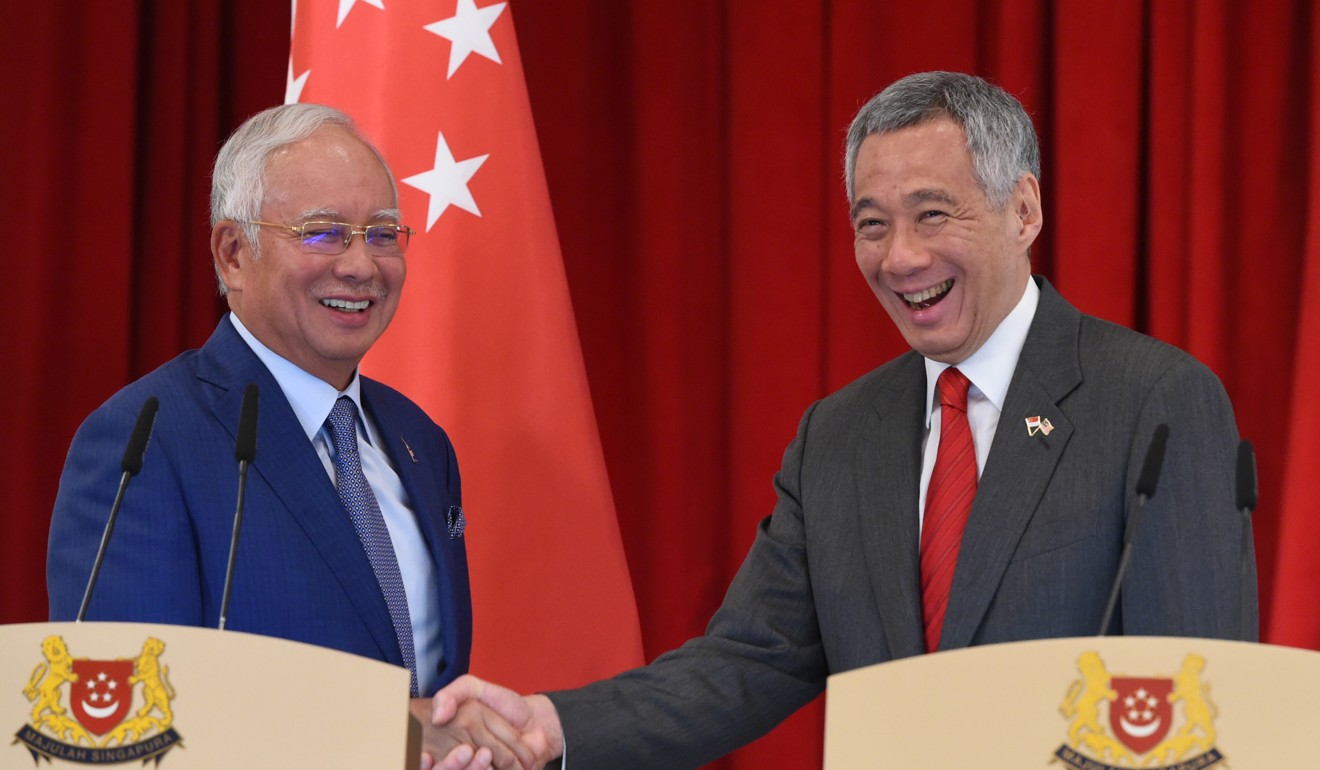
Malaysia considers reviving Mahathir’s ‘crooked bridge’ project to Singapore
Senior Malaysian government official says two-decade-old plan to build a crossing that would allow ships to pass under it could be back on – but Singapore could well have a differing opinion
Osman Sapian – chief minister of the Malaysian state of Johor, which neighbours Singapore – told reporters in parliament the bridge plan would be discussed in a bilateral ministerial meeting later this month.
Malaysian PM-in-waiting Anwar Ibrahim insists no timeline on taking power as he makes official return to politics
The third bridge is a separate proposal for a new bridge between the two countries. The neighbours are currently connected by two land bridges – the 95-year-old Causeway and a Second Link built in 1998.
During his first stint as prime minister, from 1981 to 2003, Mahathir had proposed the so-called crooked bridge as a replacement for the Causeway, which was built by former colonial rulers Britain.

The veteran leader had proposed the new bridge to improve traffic flow and – crucially for the Malaysian economy – allow ships to cross the Johor Strait, providing a boon to ports in the state.
Singaporean leaders never agreed, saying the project was unnecessary because the causeway was in good condition.
Observers have long cited the crooked bridge proposal – and Singapore’s refusal to assent to it – as a key reason bilateral ties were patchy during Mahathir’s first stint in power.
Asia looks to China with ‘admiration – and trepidation’: Malaysian minister Azmin Ali
The plan fell through during the tenure of his successor Abdullah Badawi, and when Najib Razak took over in 2009, he too refused to take up the cudgels for Mahathir’s bridge plan.
“Before this [Mahathir] asked [predecessors] Abdullah Badawi, Najib Razak to do [the bridge],” Osman said on Tuesday. “Last month he asked me if Johor needs the crooked bridge, I said it’s up to you because it’s your idea before, if you say you want to continue I will follow as there are many benefits.”
Hours after Osman’s press briefing, the influential crown prince of Johor, Tunku Ismail Idris, said there was “nothing concrete” about the plan. “Long way to go,” the constitutional monarch tweeted.
His father the Sultan of Johor Ibrahim Ismail has close ties with Singaporean leaders.
Osman said meetings with Singaporean officials would be spearheaded by key Mahathir lieutenant and economic affairs minister Azmin Ali, and would take place either on October 27 or 28.
Apart from the bridge proposal, likely talks over the Singapore’s import of Malaysian water may also prove tricky during this meeting.

Under a 1962 agreement, the Lion City can draw up to 250 million gallons of water per day from the Johor River in Malaysia – close to 60 per cent of its needs – at a cost of 3 sen per 1,000 gallons. Malaysia in turn is allowed to buy back treated water at a rate of 50 sen (12 US cents).
Singapore says it heavily subsidises the treated water Malaysia buys from it, with treatment costs costing RM2.40 per gallon.
Soon after Mahathir’s May 9 election victory over Najib, the prime minister said the 3-sen price was “manifestly ridiculous”. “That was OK back in the 1990s or 1930s. But now what can you buy with 3 sen? Nothing,” he said in an interview.
Malaysian government agrees to abolish death penalty in move hailed by rights campaigners
In a separate interview, the prime minister said though the Singapore water deal was something his government “need[ed] to settle”, he would do so by sitting down with Singapore “like civilised people”.
Singapore’s position is that both parties must stick to the agreement unless they mutually agree to amend it – Singapore for now sees no need for an amendment – and that a unilateral Malaysian move to change the price of water would call into question Singapore’s sovereignty.
This is because the water agreement is guaranteed by the “separation agreement” between the two countries that authorised the city state’s secession from Malaysia on August 9, 1965.
That agreement was registered at the United Nations.

